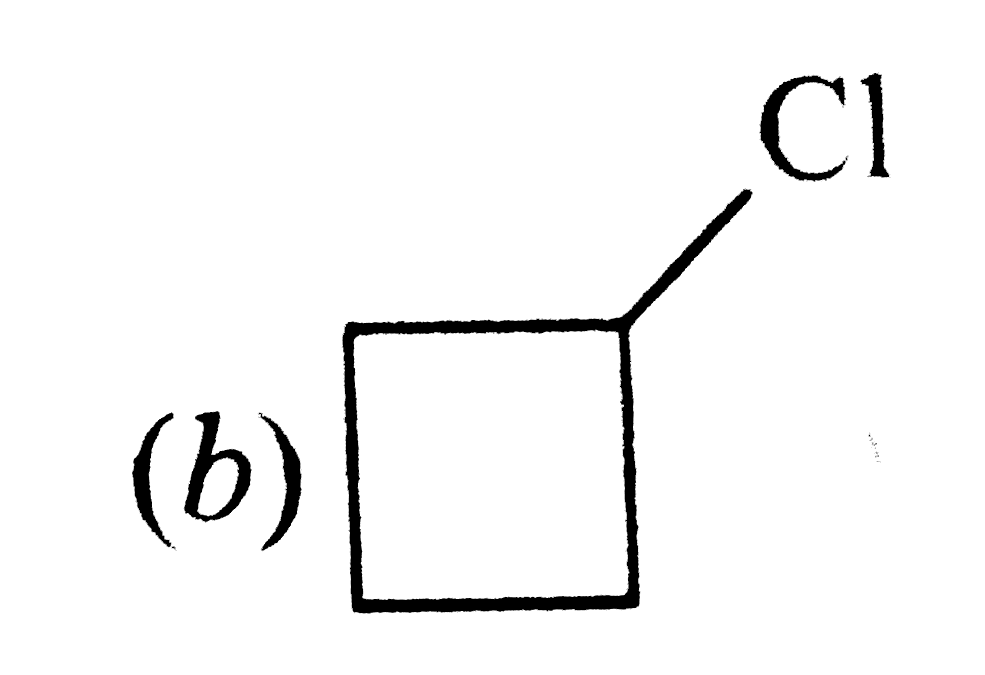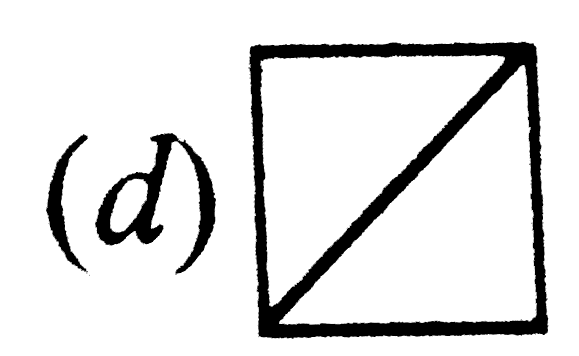Explore topic-wise InterviewSolutions in .
This section includes InterviewSolutions, each offering curated multiple-choice questions to sharpen your knowledge and support exam preparation. Choose a topic below to get started.
| 93301. |
1 g of a mixture of NaHCO_(3) and Na_(2)CO_(3) is heated to 150^(@)C. The volume of the CO_(2) produced at STP is 112.0 mL. Calculate the percentage of Na_(2)CO_(3) in the mixture (Na=23, C=12, O=16) |
|
Answer» 20 `n_(NaHCO_(3))/n_(CO_(2))=2/1` `n_(NaHCO_(3))=2n_(CO_(2))` `=2xx112/22400=0.01` mole `W_(NaHCO_(3))=0.01xx84=0.84 g` `W_(Na_(2)CO_(3))=1.00-0.84=0.16 g` `% Na_(2)CO_(3)=16`. |
|
| 93302. |
1 g of a monobasic acid when dissolved in 100 g of water lowers the freezing point by 0.168^(@)C.0.2g of the same acid when dissolved and titrated required 15.1 mL of N/10 alkali solution. Calculate the degree of dissociation of the acid. |
|
Answer» Solution :Observed MOLECULAR mass of the acid. `M_(2)=(1000K_(f)w_(2))/(w_(1)DeltaT_(f))=(1000xx1.86xx1)/(100xx0.168)=110.71` `"15.1 mL of "(N)/(10)" alkali neutrilize acid = 0.2 g"` `therefore " 1000 mL of 1 N alkali will neutralize acid "=(0.2)/(15.1)xx1000xx10=132.45g` This is the normal (calculated) molecular mass of the acid. `therefore""i=("Normal molecular mass")/("Observed molecular mass")=(132.45)/(110.71)=1.196` `{:(,HA,hArr,H^(+),+,A^(-),),("Initial",1,,0,,0,),("After disso.",""1-ALPHA,,alpha,,alpha",","Total "=1+alpha):}` `i=1+alpha"or"alpha=i-1=1.196-1=0.196=19.6%` |
|
| 93303. |
1 g of a carbonate (M_2CO_3) on treatment with excess HCl produces 0.01186 mole of CO_2. The molar mass of M_2O_3 is g "mol"^(-1) is: |
|
Answer» 1186 |
|
| 93304. |
1 g of ""_79AU^(198(t_(1//2)=65 h) gives stable mercury by beta-emission. What amount of mercury will left after 260 h? |
|
Answer» 0.9374 g `k=(0.0693)/(t_(1//2))=(0.0693)/(65)` After 260 h, `" "k=(2.303)/(260)"log"(a)/(a-x)` `(0.693)/(65)=(2.303)/(2.60)"log"(a)/(a-x)` `x=(1498)/(1598)"g"=0.9374"g"` Since,all radioactive reactions follow first order kinetics. |
|
| 93305. |
1 g mixture of glucose and urea present in 259 mL aqueous solution shows the osmotic pressure of 0.74 atm at 27^(@)C. Assuming solution to be dilute, select the correct statements: |
|
Answer» <P> Percentage of urea in mixture is `17.6` `:. a+b = 1` ….(1) Thus, `0.74 xx (250)/(1000) = ((1)/(180)+(b)/(60)) xx 0.0821 xx 300` ….(2) By eqs. (1) and (2), `b = 0.176, a = 0.824` `(P^(@)-P_(S))/(P^(@)) = (w xx M xx 1000)/(m xx W xx 1000)` `:.` Molality `= (P^(@)-P_(S))/(P^(@)) xx (1000)/(M)` or `(PI)/(ST) = (P^(@)-P_(S))/(P^(@)) xx (1000)/(M) ,(because M = m)` `:. (P^(@) -P_(S))/(P^(@)) = (0.74 xx 18)/(0.0821 xx 300 xx 1000)` `= 5.41 xx 10^(-4)` `Delta T_(b) = "molality" xx K_(b) = (pi)/(ST) xx K_(b)` `= (0.74)/(0.0821 xx 300) xx 0.5 = 0.015` `b.pt. = 100.015^(@)C` On replacing glucose `(mol. WT. 180)` by sucrose (mol wt. 342), `pi` will DECREASES as `pi prop (1)/(mol.wt)` On replacing glucose `(mol. wt. 180)` by `NaCl (mol. wt. 58.5), pi` will increases as `pi prop (1)/(mol. wt.) xx 2` for `NaCl` |
|
| 93306. |
1 g mixture of cuprous oxide and cupric oxide was quantitatively reduced to 0.839 g of metallic copper. What was the weight of cupric oxide in the original sample ? (Cu = 63. 5, O = 16). |
|
Answer» |
|
| 93307. |
1 g Mg was burnt in a closed vessel containing 2 g oxygen. Which of the following are not correct? |
|
Answer» 0.25 G of Mg will be left unburnt `"48 g Mg react with "O_(2)=32 g` `therefore"1 g Mg will react with "O_(2)=(32)/(48)g=0.67g.` Thus, whole of Mg will react `O_(2)" left unreacted "=2-0.67=1.33g` `MgO" formed"=(80)/(48)g=1.67g.` Total `=1.67+1.33=3.0g` Also, by law of conservation of mass, mixture at the end should weigh `1g+2g=3g` |
|
| 93308. |
1 g equivalent of Na metal is formed from electrolysis of fused NaCl. Number of mol of Al from fused Na _(3)AlF_(6) will be : |
|
Answer» 1 |
|
| 93309. |
1 g equiv of a substance is the weight of that amount of a substance which is equivalent to: |
|
Answer» 0.25 MOL of `O_(2)` |
|
| 93310. |
1 g atom of nitrogen represents: |
|
Answer» 14 G nitrogen |
|
| 93311. |
1 g equivalent of Na metal is formed from electrolysis of fused NaCl. Number of mol of Al from fused Na_(3)AlF_(6) Will be : |
|
Answer» 1 |
|
| 93312. |
1 g-atom of Ca was burnt in excess of oxygen and the oxidewas dissolved in water to make up a one - liter solution. Calculate the normality of thealkaline solution. |
|
Answer» Solution : FirstMethod `Ca + O_(2) CO overset(H_(2))to Ca (OH)_(2)` Ca atoms are CONSERVED `:.`applying POACfor Ca atoms, molesof Ca ATOMSIN reactant = moles of Ca in Ca `(OH)_(2)` `1 = 1 xx ` moles of `Ca(OH)_(2)` (`:.` MOLE of `Ca(OH)_(2)` contains1 mole of Ca) `:.`moles of `CaO=(OH)_(2)= 1 ` Sincethe solutionis madeup to 1 liter , molarityof `Ca(OH)_(20`= 1 M andnormalityof `Ca(OH)_(2) = 2 N` [ Note : In the above problems,therules applied have been referred to wherevernecessary just to MAKE everstep easy to follow. Itmay, thus, be expected that thestudentsmust now have beenwell acquainted with therulesandtheirapplication, and so in the following problemsrules have been rarely mentioned except where theyare at all required.] |
|
| 93314. |
1dm^(3) of2MCH_(3)COOH is mixed with 1dm^(3) of 3M ethanol to form ester. The decrease in the initial rate if each solution is diluted with an equal volume of water would be |
|
Answer» 2 TIMES |
|
| 93315. |
1 coulomb of electricity produces m kg of a substance 'X'. The electrochemical equivalent of 'X' is |
|
Answer» m |
|
| 93316. |
1 coulomb of electricity is passed through a solution of AlCl_(3), 13.5 g of Al is deposited. The number of faradays must be |
|
Answer» m |
|
| 93317. |
1 coulomb of charge passes through solution of AgNO_(3) and CuSO_(4) connected in series and the concentration of two solution being in the ratio 1 : 2 . The ratio of amount of Ag and Cu deposited on Pt electrode is |
|
Answer» `107.9 : 63.54` `therefore` 1g Eq. of Ag = 1 g Eq. of CU `therefore 107.9 -= 31.77` |
|
| 93318. |
1-chloromethyl-4-methyl-1, 3-cyclopentadiene is solvolysed in aqueous acetone based on the above solve the following questions. The number of enantiomeric pair formed during the reaction is |
|
Answer» 1 |
|
| 93319. |
1-chloromethyl-4-methyl-1, 3-cyclopentadiene is solvolysed in aqueous acetone based on the above solve the following questions. Which of the intermediates is not possible? |
|
Answer»
|
|
| 93320. |
1-chloromethyl-4-methyl-1, 3-cyclopentadiene is solvolysed in aqueous acetone based on the above solve the following questions. which of the following product is not formed? |
|
Answer»
|
|
| 93321. |
1-Chlorobutane on reaction with alcoholic potash gives : |
|
Answer» 1-Butene |
|
| 93322. |
1- chlorobutane on reaction with alcohlic KOH gives: |
|
Answer» 1-butene |
|
| 93323. |
1-chlorobutane on elimination gives, |
|
Answer» 1-butene |
|
| 93324. |
(1) Chlorine forms number of oxides such as Cl_(2)O , ClO_(2), Cl_(2) O_(7) chlorine and oxygen donot combine together directly. So, these are prepared by indirect method. HgO. Hgo + Cl_(2) rarr Cl_(2)O + Hg, (2) Some of these oxides undergo disproportionation reactions. For Ex : Cl_(2) O_(6) + 2KOH rarr KClO_(3) + KClO_(4) + H_(2)O ( 3) The oxides of chlrine are acidic in nature. Cl_(2)O_(7) is the anhydride of perchloric acid Cl_(2) O_(7) + H_(2) O rarr 2HClO_(4) Which of the given statement is incorrect |
|
Answer» `ClO_(3)` exists in equilibrium with `Cl_(2) O_(6)` the dimer diamagnetic while monomer is paramagnetic |
|
| 93325. |
(1) Chlorine forms number of oxides such as Cl_(2)O , ClO_(2), Cl_(2) O_(7) chlorine and oxygen donot combine together directly. So, these are prepared by indirect method. HgO. Hgo + Cl_(2) rarr Cl_(2)O + Hg, (2) Some of these oxides undergo disproportionation reactions. For Ex : Cl_(2) O_(6) + 2KOH rarr KClO_(3) + KClO_(4) + H_(2)O ( 3) The oxides of chlrine are acidic in nature. Cl_(2)O_(7) is the anhydride of perchloric acid Cl_(2) O_(7) + H_(2) O rarr 2HClO_(4) Euochlorine is a mixture prepared by heating KClO_(3 with con HCl euchlorine is a mixture of |
|
Answer» `Cl_(2)` and `Cl_(2)O_(7)` `2KClO_(3) + 4HCL RARR 2KCl + 2ClO_(2) + Cl_(2) + 2H_(2)O` |
|
| 93326. |
1-chloro-2, 4-dinitrobenzene to 2, 4-dinitrophenol |
Answer» SOLUTION :1-chloro-2, 4-dinitrobenzene to 2, 4-dinitrophenol : 
|
|
| 93327. |
1-chloributane is treated with alcoholic potash the major product formed is |
|
Answer» but-1-ene |
|
| 93328. |
1 cf at liquid of molar volume 100 mL is kept in an adiabatic container under a pressure of 1 bar.The pressure is steeply increased to 100 bar.Under this constant pressure of 100 bar, the volume of the liquid decreases by 1 mL.Calculate DeltaU of the process. |
|
Answer» `DeltaU=DeltaQ+DeltaW` for adiabatic process `DeltaQ=O` `:. DeltaU=DeltaW=-PDeltaV= -100xx10^5(-10^(-6))=10 J` |
|
| 93329. |
1 c.c. of 0.01 M HCl is added to 99.9 cc of NaCl solution . PH of resulting solution will be : |
|
Answer» 7 |
|
| 93330. |
1 C electricity deposits: |
|
Answer» `10.8` G of Ag |
|
| 93331. |
1-butyne reacts with cold alkaline KMnO_4 to produce |
|
Answer» `CH_3CH_2COOH` |
|
| 93332. |
1-Butyne on treatment with hot alkaline KMnO_(4) gives |
|
Answer» `CH_(3)CH_(2)CH_(2)COOH` |
|
| 93333. |
1-Butyne can be prepared by treating sodium acetylide with : |
|
Answer» ethyl bromide |
|
| 93334. |
1-butyne on reaction with hot alkaline KMnO_4 gives: |
|
Answer» `CH_3CH_2CH_2COOH` |
|
| 93335. |
1-butyneand 2-butyne are allowed to react separately with the reagents given below: Na, liquid NH_3 |
|
Answer» SOLUTION :Both 1-butyne & 2-butyne REACT separately with reagents 1 and 2 to produce 1 - butene and 2-butene respectively. However reagents 3 &4 react with 1-butyne & 2-butyne separately to YIELD same products (2-butanone &butane ). 
|
|
| 93336. |
1-Butene may be converted to butane by reaction with |
|
Answer» Zn-HCl |
|
| 93337. |
1-butanol is treated with PCC gives, |
|
Answer» `CH_3CH_2CH_2COOH` |
|
| 93338. |
1-butanol is reacted with diazomethane to give, |
|
Answer» 1-methoxy butane |
|
| 93339. |
1-butanol is oxidised by acidified K_2Cr_2O_7 give, |
|
Answer» butanal |
|
| 93340. |
1-butane reacts with HBr in presence of peroxide given |
|
Answer» `CH_(3)-CHBrC_(2)H_(5)` |
|
| 93341. |
1-Bromopropane on reaction with LiAlH_4 yields |
|
Answer» PROPANE |
|
| 93342. |
1-Bromo-3-chlorocyclobutane when treated with two equivalents of Na, in the presence of ether, which of the following will be formed? |
|
Answer»

|
|
| 93343. |
1 - Bromo -2, 2 -dimethylcyclohexane on treatment with methanol gives |
|
Answer»
|
|
| 93344. |
1 atm is |
|
Answer» `236.7 KJ KG^(-1)` |
|
| 93345. |
(1) Arrange sp, sp^(2) & sp^(3) - orbitals in increasing order of : (a) bond length (b) bond angle ( c ) bond energy (d) size of orbitals and ( e ) s - character. (2) Organic compounds are usually water insoluble. Why? (3) Write the structure of the smallest hydrocarbon having empirical formula C_(2)H. What is the shape of the molecule? (4) Draw the p - orbitals involed in forming pi - bonds in the molecule, CH_(2) = C = CH_(2) and predict whether the molecule is planar or not. |
|
Answer» Solution :(1) (a) `SP-spltsp^(2)-sp^(2)ltsp^(3)-sp^(3)` (b) `sp^(3)ltsp^(2)ltsp ( c ) )sp^(3)-sp^(3)ltsp^(2)-sp^(2)ltsp-sp` (d) `spltsp^(2)ltsp^(3)` ( E ) `sp^(3)ltsp^(2)ltsp` (2) Organic COMPOUNDS are covalent in nature. Thus they do not get ionised. Moreover, they are usually less polar ot non - polar compounds and hence do not dissolve in highly polar solvent, water. (3) The compound is `(C_(2)H)_(2) or C_(4)H_(2)` and its STRUTURE is `HC-=C-C-=CH`. The shape of the molecule is linear because all the C - atoms are sp - hybridised. (4)  The molecule is non- planar because the two planes containing one C - atom and two H - atoms are perpendicular to each other. The molecule is non- planar because the two planes containing one C - atom and two H - atoms are perpendicular to each other.
|
|
| 93346. |
1% aqueoussolutionofCa(NO_(3))_(2)has freezing point |
|
Answer» `0^(@)C` |
|
| 93348. |
1//[A] vs time is a straight line. The order of the reaction is |
|
Answer» 1 |
|
| 93349. |
1. 84 g of a mixture of CaCO_(3) nad Mg CO_(3) was heated to a constant weight. The constant weightof theresiduewas found to be 0.96g. Calculate thepercentage compositionofthemixture. ( Ca = 40 , Mg = 24 , c = 1 , o = 16) |
|
Answer» Solution :On heating `caCO_(3) and MgCO_(3)` , one of the products , `CO_(2)` , escapes out . We have, `{:(CaCO_(3)+MgCO_(3)""to ""CaO+MgO+CO_(2)uarr),("x g(-84 - x) gy g (0.96 - y ) g "),("(say)(say)"):}` APPLYING POAC for Ca atoms, moles of Ca atoms in `CaCO_(3)` = moles of Ca atomsin CaO `1 xx ` moles of `CaCO_(3) = 1 xx ` molesof CaO `(x)/(100) = (y)/( 56)""[{:(CaCO_(3)=100),(" "CaO = 56):}]. . . (i)` Again applying POAC for Mg atoms, moles of `MgCO_(3) ` = molesof Mg in MgO `1 xx` molesof `MgCO_(3)= 1 xx ` moles of MgO `(1 . 84 - x)/( 84) = (0.96 - y)/( 40 ) [{:(MgCO_(3)=84),(" MgO = 40 "):}]"". . . (ii)` From eqns . (i) and (ii), we GET x = 1 g, y = 0. 84 g `% of Ca CO_(3)= (1)/( 1 . 84) xx 100 = 54.34%` and `% of MgCO_(3) = 45.66%` Second Method Applying POAC for C atoms. |
|
| 93350. |
(1)/(4)[Li_(CH_(3))_(4)]+[Mo(CO)_(6)] to [X] Here X is Lithium acetylpentacarbonyllmolybdate(1-), then find the total number of Mo-C linkages in the complex X |
Answer» 
|
|














